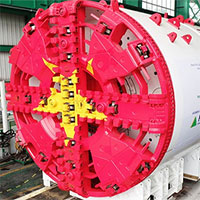An age-old mystery in the study of glaciers has happened to be solved by a team led by an astrobiologist. The findings have been published in the journal Geophysical Research Letters.
The mystery involves special floods or “jokulhlaups” that emerge suddenly and unpredictably from glaciers or ice caps like those in Iceland, where the heat of volcanoes melts ice and water accumulates in lakes beneath glaciers.
Scientists have long studied the development of these floods, some of the largest on Earth.

Glaciers may contain smaller bodies of water above the lakes provided by summer melting.
“These floods can affect the movement of some glaciers and are a significant hazard in Iceland. But the mechanism and timing of the onset of these floods are still not well understood,” said Gaidos, professor at the UH Mānoa School of Ocean Science and Technology (SOEST).
In June 2015, a series of unexpected events revealed how these floods began. Gaidos and colleagues drilled a hole in one of the lakes in Iceland to study its microbial life. While collecting samples through the borehole, the team suddenly noticed a problem like the drain in a bathtub.
“The current was so strong that we almost lost the sensor and sampler into the pit. We surmise that a body of water inside the glacier was accidentally connected to the lake below. That body of water is rapidly receding into the lake,” Professor Gaidos said.
A few days later, after the team left the glacier, the lake drained in a flood. Fortunately, the small flood and Icelanders had a sophisticated early warning system in their rivers so no one was injured, nor was infrastructure damaged in the event.
However, the researchers used a special computer model that studies runoff through the hole and its impact on the lake, to show that this can cause flooding.
“We found that glaciers can hold smaller bodies of water above the lakes provided by summer melting,” said Professor Gaidos. If this body of water is connected hydraulically to the lake then the pressure in the lake will increase and that allows the water to start escaping underneath the glacier.”
While the team created an artificial connection to the lake in 2015, natural connections can form when water from rain or snow melt accumulates in the trenches and pressure eventually creates a trail. cracks through the glacier to the lake. This discovery provides new insights into how these floods may begin and how this depends on the weather and season.
For now, the collaborators in Iceland are continuing to study the phenomenon by using radio echometry to look for bodies of water inside the ice, as well as studying the larger lake below it.

